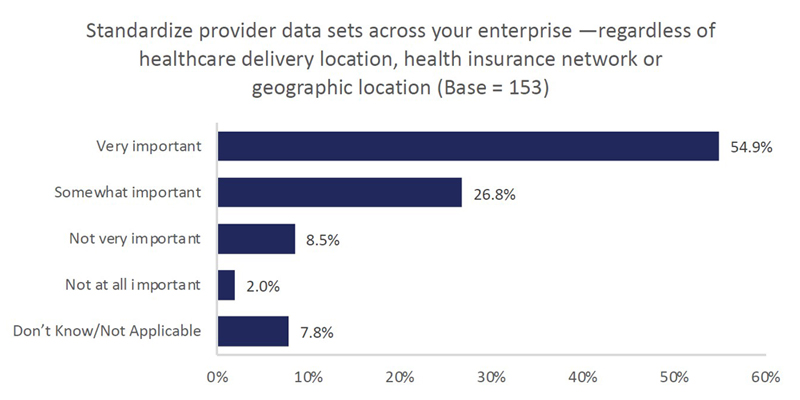
What Today’s Provider Enrollment Professionals Are Saying About Provider Data Management
Medical Services Professionals (MSPs) throughout the country agree their jobs require a lot of diligence, attention to detail, and patience. And since MSPs are tasked with the responsibility of ensuring patient safety, we’re on an ongoing mission to provide them with actionable data they can use to improve their processes. That’s why 2022 marks the sixth year of our Annual Report on Provider Enrollment, our annual survey to uncover top enrollment trends so organizations big and small can learn how to best serve their customers.
This year, we surveyed over 500 Provider Enrollment experts, the majority of whom were part of a physician or medical practice who are standalone, a corporate location of a health system (including health system-based CBOs), and hospitals that are part of a health system. Let’s take a look at our survey results with a focus on our key findings regarding Provider Data Management.
Is Provider Data Management Important?
Some of you may be rolling your eyes, of course, it is! But how important do our survey respondents really feel it is? Three quarters (76.6%) of surveyed Provider Enrollment professionals rated the importance of Provider Data Management as extremely important. Less than one-fifth (18.3%) rated it as very important, and only a few rated it as only somewhat important (2.5%). As the rate of importance continues to grow, so does the need to implement systems that facilitate comprehensive data management that can be trusted.
Top Provider Data Management initiatives included:
- Integrate with CAQH and PECOS systems
- Standardize provider data sets across your enterprise—regardless of healthcare delivery location, health insurance network or geographic location.
- Integrate your on-boarding platform to seamlessly include recruiting, HR, credentialing, privileging and provider enrollment processes into one platform and across all teams.
Notably, the third bullet found the largest increase of importance rating from previous years, growing 5.5% since 2017.
Provider Data Management Roadblocks
Every organization faces different hurdles when it comes to effectively managing its data. When asked to identify the biggest obstacles to Provider Data Management within their organization, responses were fairly evenly distributed (respondents were asked to select all that apply):
- Vendor and /or software limitations, 40.6%
- Internal resource constraints in their organization, 36.3%
- Competing priorities in their organization, 29.1%
- Lack of defined provider data management roles and responsibilities, 25.9%
- Lack of a clear definition of provider data management, 23.8%
Additional, less popular responses included: lack of vision from leadership in the organization, 13.8%, political resistance to change from internal stakeholders and/or providers, 11.6%, or other, 15%. What is clear from this data is that many of these hurdles can be addressed, be it through implementing a new solution, working internally to align priorities, or editing policies in place to clarify what provider data management entails for an organization.
Provider Data Standards Policy
When asked about the importance of standardizing provider data management, 81.7% of respondents agreed it is either “somewhat” or “very important.” This shows a 3.4% growth since 2017.

Being that one of the reported impediments organizations face is a lack of a clear definition of what provider data management is, it follows that respondents agree that standardizing the procedure is important. With standardization comes accountability, the ability to track, and more overall clarity. With today’s MSP’s never-ending list of responsibilities, organizations could stand to benefit from implementing solutions that facilitate their data management so there are fewer errors down the line.
In Summary
As we get ready to head into the new year, organizations are looking for ways to become more efficient while protecting their bottom line. Provider data management is a critical component of the healthcare setting. The better that data is handled, the better the outcome. Our survey uncovered much more about how different organizations work within their provider data management constraints. Get all the details by downloading the report, or watch the webinar uncovering the results. We hope you find this information as valuable as we did, and if you have any questions, we’re only a phone call away.
